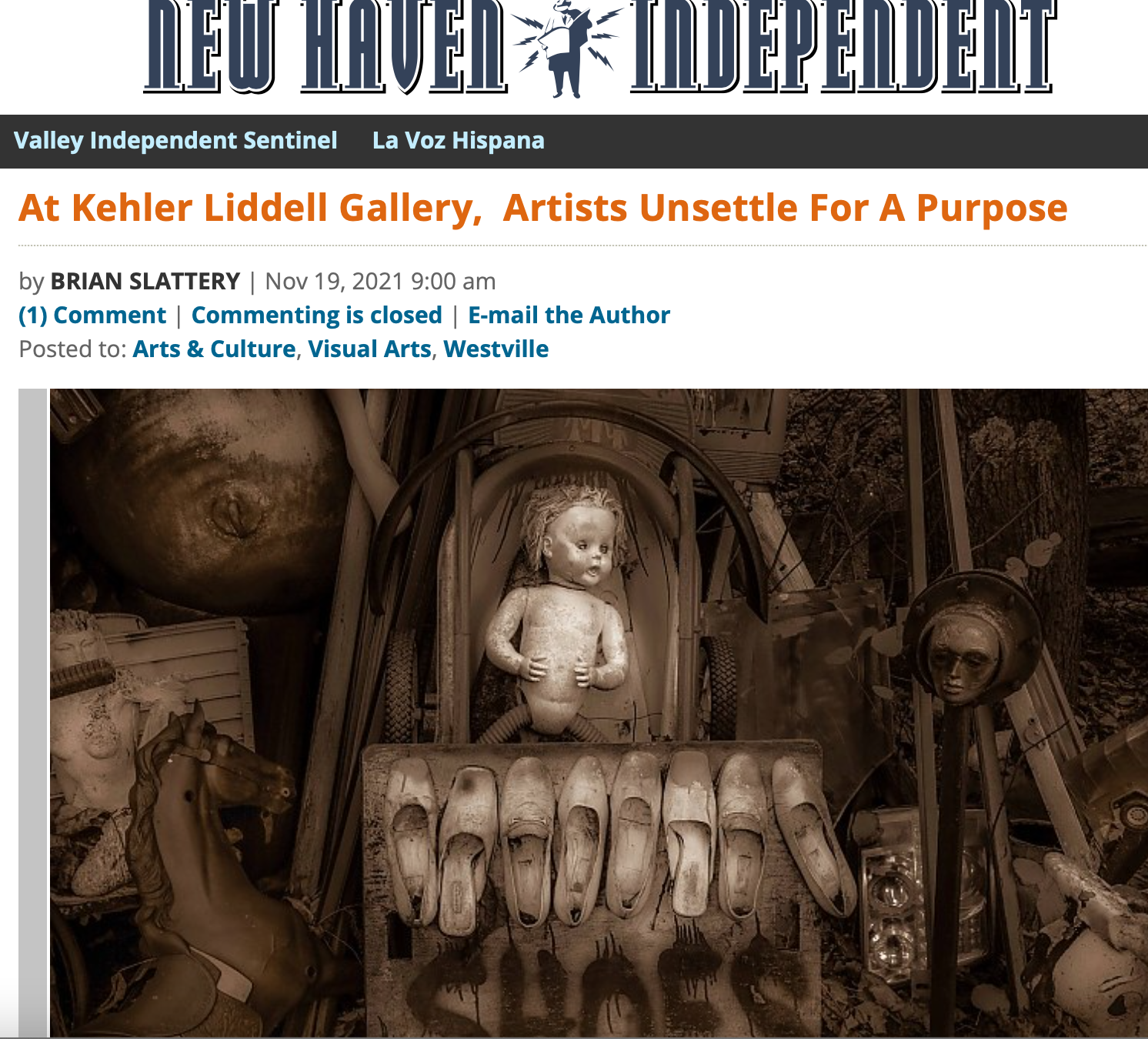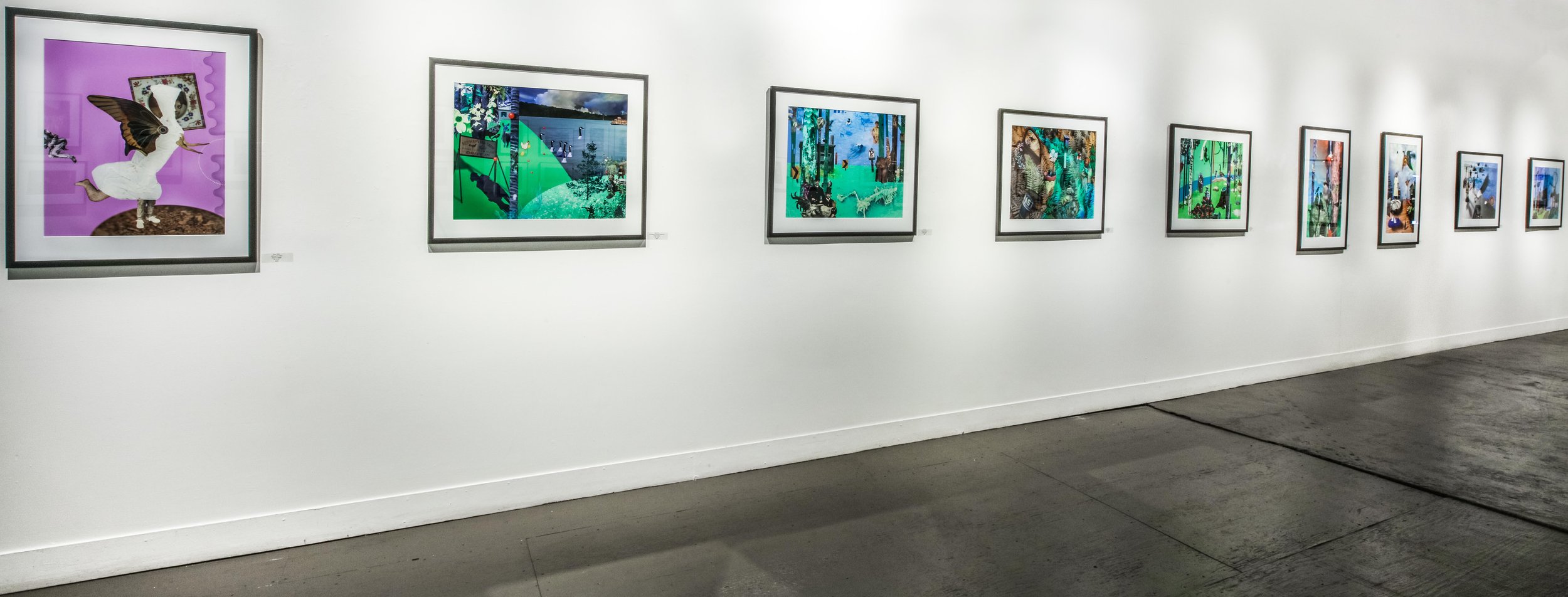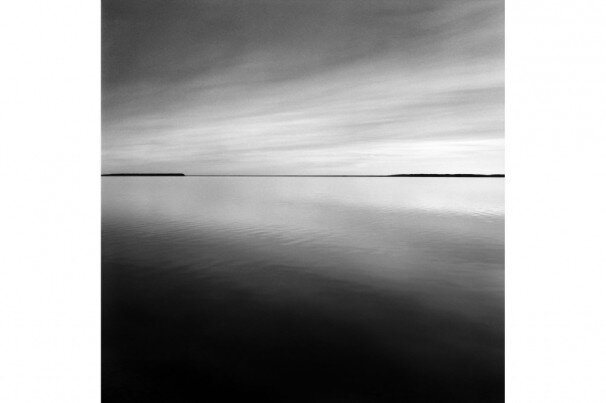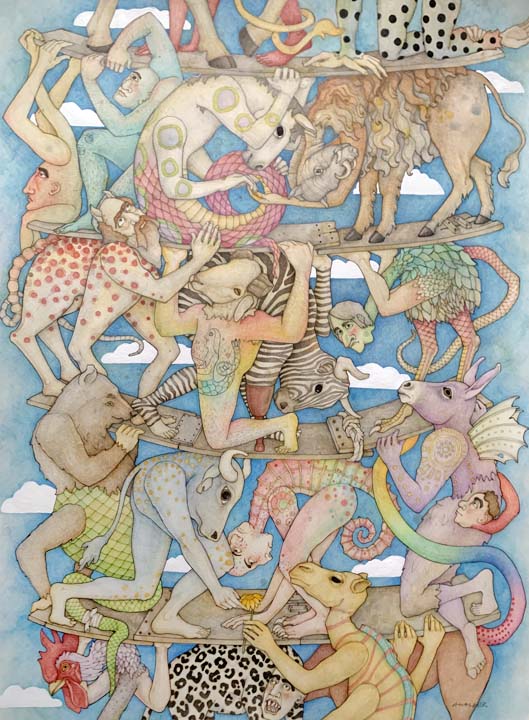“If I can help turn sea slugs into biodiversity superheroes, which they really are, and somehow improve their chances of survival, then this project will be a success.”-Gar Waterman
Read moreArtists Unsettle For A Purpose in the NHIndy →
image by R.F. Wilton
“50 Artists Interpret The Power of DNA” in New Haven Arts →
A review of the Our DNA juried show.
Thumbnail of Mitochondrial Eve by Kate Henderson
“Uncorked” in the Daily Nutmeg →
Brian Flinn’s Message in a Bottle series at The Blake Hotel
“Photos From Here, Paintings From Below” from the New Haven Arts paper →
Originally posted Sept 16, 2021
"Open Secrets” in the Daily Nutmeg →
The exhibitions of Kate Henderson and Marjorie Gillette Wolfe are visited by Daily Nutmeg.
"Two Artists Find Inspiration in Isolation” in the NHIndy →
Originally posted Sept 10, 2021 image by Marjorie Wolfe
"Artists Read Between The Lives” in the NHIndy →
"Genetic Material” in the Daily Nutmeg →
“Kehler Liddell Group Show Has Good Genes” in NHIndy →
Review of the “Our DNA” juried show.
Two Artists Thrive on Lines and Color
Read this recent NHIndy piece about our current exhibitions at KLG
https://www.newhavenindependent.org/index.php/archives/entry/klg_hank_paper_robert_bienstock/
New Haven's Art Scene in the New York Times →
Looking Up! Amanda Duchen and Chris Ferguson
French Postcards by Penrhyn and Rod Cook
Gar Waterman and Tom Edwards
Check out this great review of Gar Waterman’s, A Pattern Language, and Tom Edwards’, Dreams and Shadows, in The Arts Paper: https://www.newhavenarts.org/arts-paper/articles/gar-waterman-and-tom-edwards-merge-the-shadows-of-the-past-and-present
From KLG….
February 13th — March 15th, 2020: Kehler Liddell Gallery presents: A Pattern Language, by Gar Waterman, and Dreams and Shadows, by Tom Edwards. The exhibitions open with a reception on Saturday, February 15th, 3:00pm-6:00pm, beginning with Artist Talks at 3:00pm.
In A Pattern Language, sculptor Gar Waterman uses wooden foundry patterns from the National Pipe Bending Company (NPBC) to take a fresh look at a vestige of New Haven’s industrial past. NPBC prospered for over 100 years on River Street in Fair Haven as a subsidiary of The Bigelow Boiler Company. Patterns were a key part of the cast iron production process, but orphaned by changing times and the exodus of manufacturing from the New England landscape. When NPBC closed, the company abandoned the building and left behind a stash of patterns in the attic. A classic example of artistic alchemy with the found object, the sculptures retain the pattern’s original patina of time, use, and color while endowing them with new life and meaning.
While Waterman’s works reimagine a piece of New Haven’s forgotten industrial past, Tom Edwards takes a look at what goes unnoticed in Dreams and Shadows. The artist states that his “primary concern is the visual development of images that describe dream-related memory and a nocturnal atmosphere.” Presenting five triptychs developed in the realm of twilight and moonlight, and another created around memories, Edwards pairs these with a group of etchings printed on plaster that are related to the current political climate around border walls. The created dichotomy begs the viewer to consider the multifaceted darkness the artist is investigating on both a personal and national scale.
Gar Waterman was born in Maine and grew up in Princeton, NJ. After graduating Dartmouth College, Waterman moved to Pietrasanta, Italy, where he lived for seven years and learned to carve stone. His sculpture combines observation of natural phenomena, sensual devotion to the tactile possibilities of material, and a model maker's tinkering sensibility. In 1996, the artist acquired an abandoned warehouse for $1 from the City of New Haven and transformed it into West Rock Studio, where he has lived and worked for the last 24 years.
Tom Edwards received a MFA from Yale University School of Fine Arts, majoring in painting and printmaking. He was awarded the Elizabeth Canfield Hicks Honorary Award in Drawing. He received a MA from Kansas State University, majoring in drawing and printmaking, where he also received a bachelor of architecture degree. Tom's work has been exhibited extensively in solo and group exhibits worldwide, and is held in numerous collections such as: Metropolitan Museum of Art (NYC), Library of Congress (DC), National Museum of American Art (DC), Smithsonian Collection (DC), The New Britain Museum of American Art (CT), Baltimore Museum (MD), and The Boston Printmakers Permanent Collection (MA), to name a few.
Artist Talks are presented in part by ArtEcon Initiative (AEI). AEI is a neighborhood-based non-profit and an outgrowth of ArLoW (Art Lofts West). The primary mission of ArtEcon is to produce and support free, or low cost, arts and community programs for all ages in the Westville West-Rock neighborhood. Programming is made possible in part with support from the Community Foundation of Greater New Haven, The New Alliance Foundation, The City of New Haven Mayor’s Community Art Grants Program, and the Pincus Family Foundation. www.ArtEconInitiative.org
From the Daily Nutmeg
Point of View
by Kathy Leonard Czepiel
There’s something to be said for repetition. Sepiessa Point, Marjorie Gillette Wolfe’s new photography exhibition, which shares the front area at Kehler Liddell Gallery with a group show featuring the collective’s newest members, is made up entirely of photographs taken in the Sepiessa Point Reservation on Martha’s Vineyard. Many of Wolfe’s photographs were taken at a 700-acre brackish body, Tisbury Great Pond, looking outward from its inland shore with the same delicate line of barrier beach on the horizon.
In the 20 years Wolfe has spent photographing the spot, familiarity has bred not contempt but appreciation. “I know I’m going to find Tisbury Great Pond, I know I’m going to see a barrier on the other side. I know that tree is going to be there,” the artist says, referring to a nearly trunkless tree with branches sprouting upward and outward like a mass of neurons. “But I’m telling you,” Wolfe adds, “every time there’s a surprise.”
This is a modest explanation that suggests the variety in Wolfe’s photographs comes from the chances provided by nature—the wind blowing here, the ice forming there, the blush of the sun in a hazy sky. But for viewers, many of the surprises in this exhibition come from Wolfe’s finely tuned sensitivity to shape and texture, light and color.
One series of five photographs literally offers the same view from the same spot, each one strikingly unique. Sepiessa Calm, in black and white, uses the dark pencil line of barrier beach to bisect the picture, separating water from sky. But both elements are subsumed by a cone of light that reaches across the image in stripes of white and gray—thinner in the sky, broader and rounded in the water. Sepiessa White, in subtle color, is a magnificent winter landscape in which blue tracks stripe the snow at water’s edge, providing a parallel to the frozen shoreline. Here, clouds like the spokes of a gigantic wheel are shot through with golden light, dissolving into a softened space somewhere between land and sky. The entire print shimmers like an old silver daguerreotype. Wolfe’s choices—color vs. black-and-white, how to handle the light, where to place the shoreline—add up to these striking, evocative images that make an argument for the vast range a single place can offer.
Even the way in which the photographs are arranged in the gallery demonstrates Wolfe’s artistic eye. A grouping in front plays on the clamshell curves of water and sand. In one image, a bow of sand rises toward the center of the photograph. In another, water bends toward the bottom of the frame. The repeated geometry establishes what we should be attuned to, so when we look at Sepiessa East Blue Sky, we see what we might otherwise have missed: a relaxed arc where wet sand meets dry, mirrored in the curving drift of steamy clouds and blue sky across the top of the color image.
Among this group themed with curves, Sepiessa White Horizon depends most on straight lines. Here, the dark line of horizon, slightly irregular due to the distant land formations edging the barrier beach, anchors the image. A smoke-colored sky bears down heavily like the lid of a cast iron pot. From the crack between them, bright light shoots forcefully toward the viewer. The lake’s water catches this light in its gentle ripples. But the picture’s most delightful element lies in the foreground. Here, wavelets break the horizontal theme, drifting sideways like creases in a wrinkled tablecloth.
Sepiessa Point includes several panoramic images and other gems: a photograph in which a patch of ice on the trail to the pond echoes the shape of a knobbly cloud arching across the sky; an image of that brainlike tree, its spidery branches echoed in the wispy tentacles of a cloud improbably perched like an ethereal jellyfish above; a shot of the sand that could be a moonscape.
Tisbury Great Pond is cleansed every few months when the barrier beach is cut to let the salt water in, Wolfe says, a practice that dates back hundreds of years to the Wampanoag, the pond’s original residents. “It’s better for the health of the fish and the shellfish. It’s just healthy for the pond,” she says. “The ocean comes in, cleans the pond, and the waves and the wind… bring the sand back in.” The process can take a day or two, or several months.
Nature will have its way. It will send remarkable clouds or a day so still that the pond could be a sheet of glass. It will send a winter so cold that salt water freezes. Luckily for us, Marjorie Gillette Wolfe was there to capture it and make it her own.
What a Summer!
We have had a busy summer here at KLG! We so enjoyed hosting guest artist, George Corsillo, and his new retrospective, “More is More.” Check out the details below.
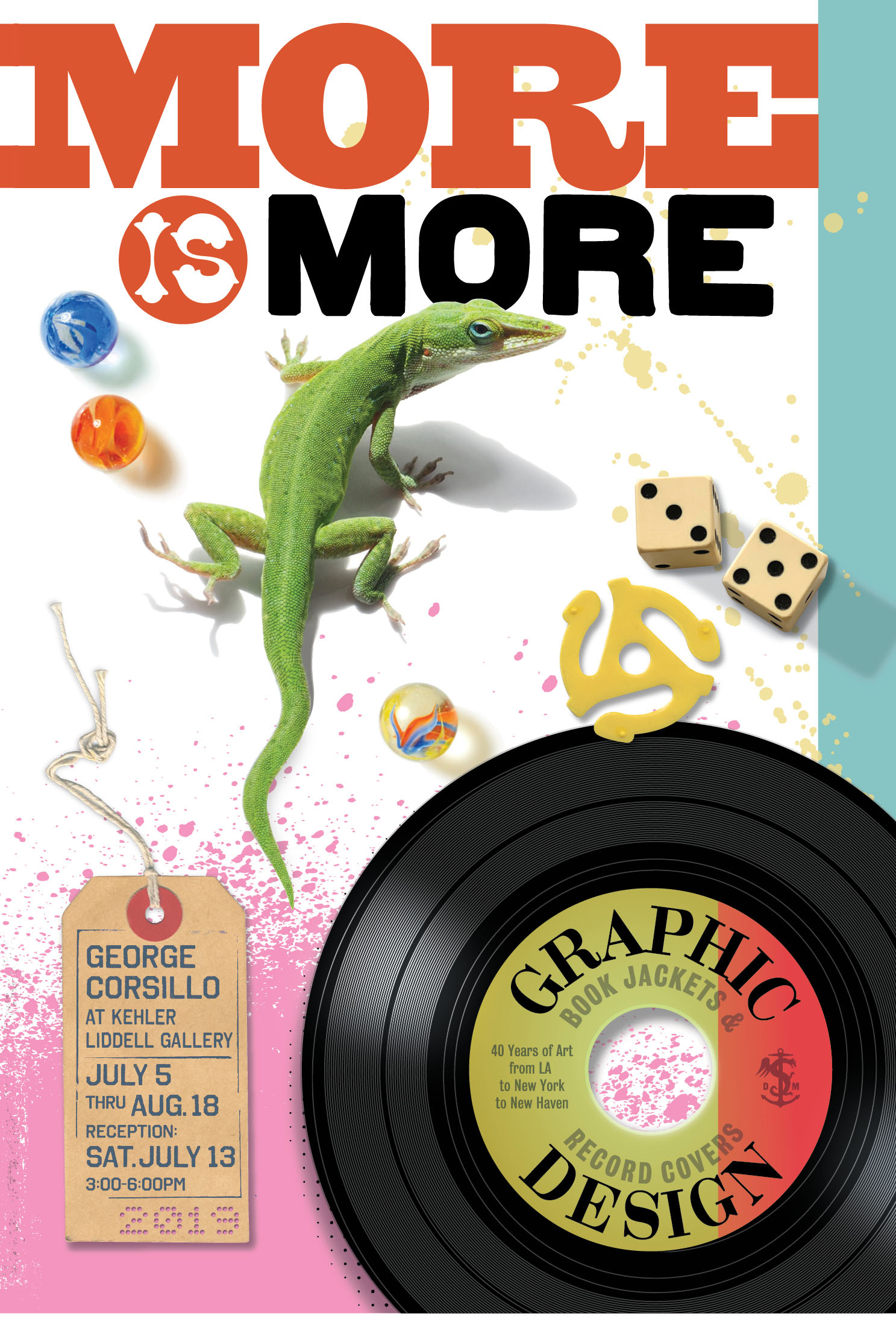
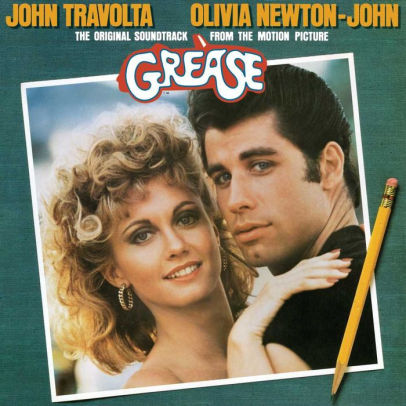

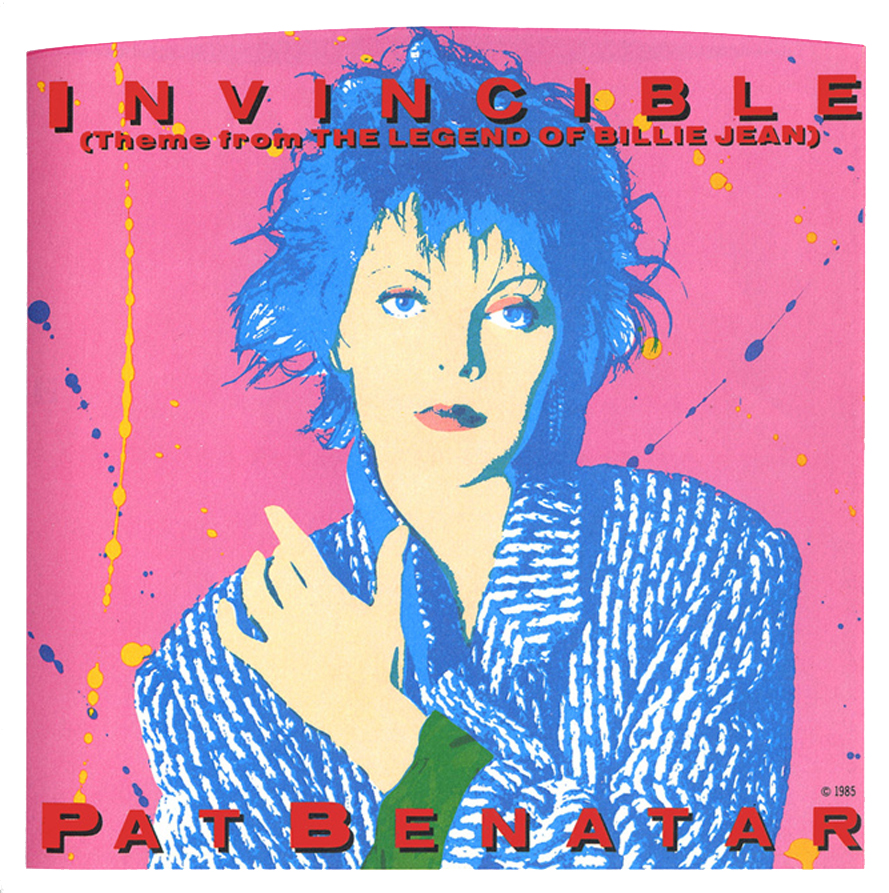
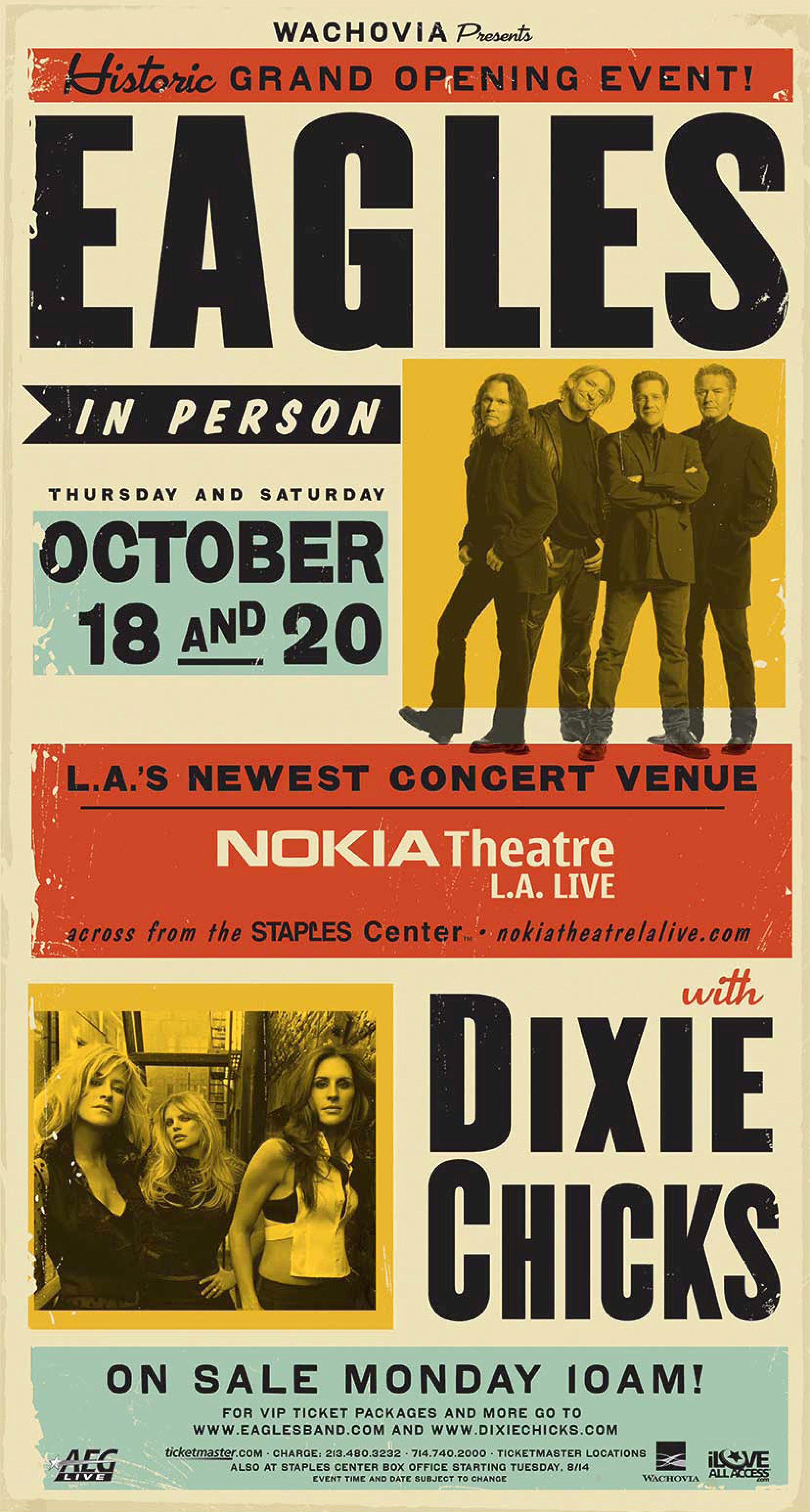

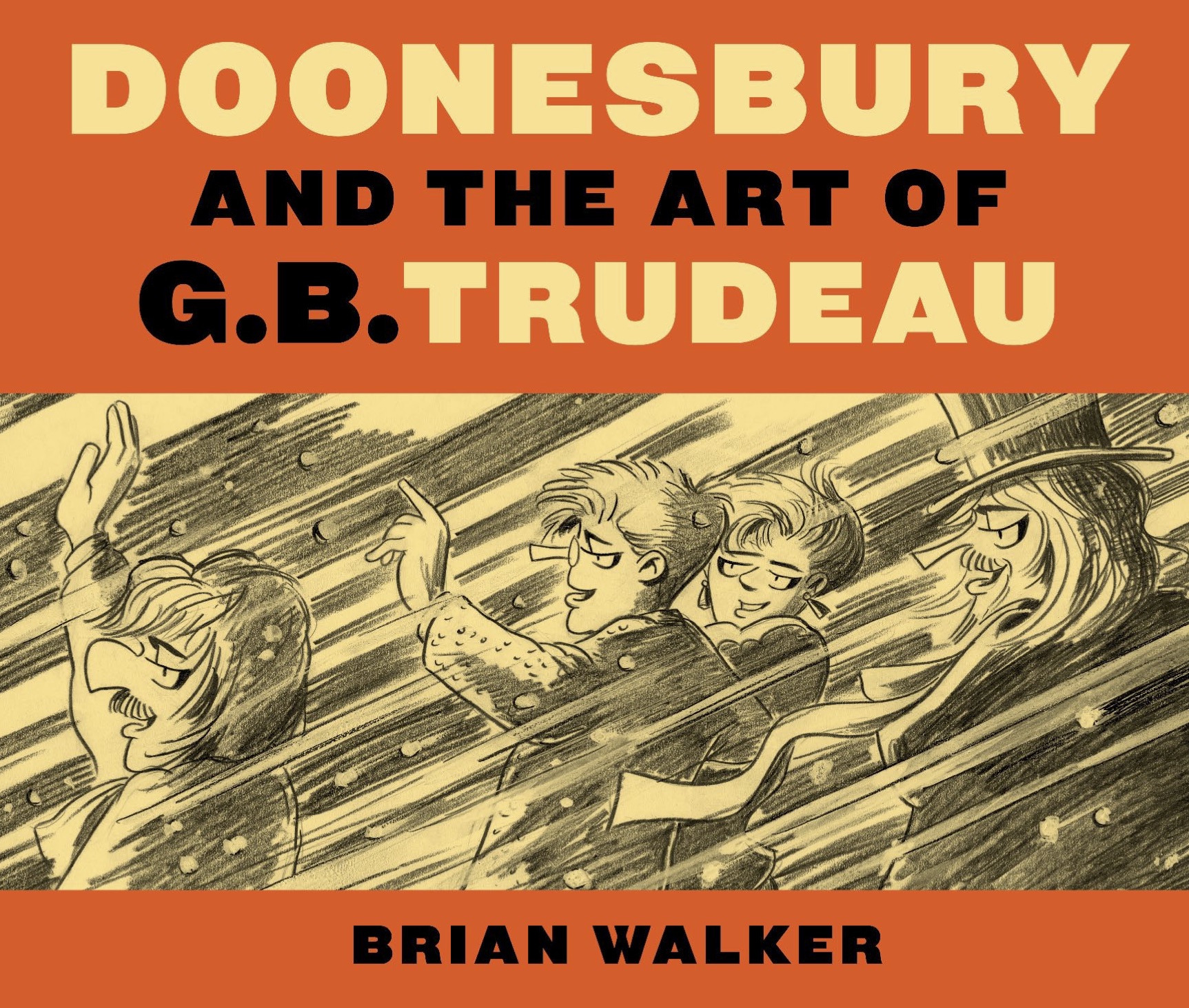
WHAT DO GARRY TRUDEAU, JOHN MELLENCAMP, AND CARRIE FISCHER HAVE IN COMMON?
With “More is More,” George Corsillo chronicles his design career packaging celebrities large and small.
NEW HAVEN, July 5 – August 18, 2019: Kehler Liddell Gallery, in partnership with Westville Village Renaissance Alliance and ArtEcon Initiative, presents: More is More, by George Corsillo, with an Opening Reception on Saturday, July 13th, 3-6pm, and an Artist Talk at 5pm.
Over the last forty years, George Corsillo has produced some exciting, and often iconic art. You have seen his graphic design on album covers, posters, and tour merchandise for John Mellencamp and Luther Vandross; on book covers for Carrie Fisher’s memoir Postcards from the Edge, Larry McMurtry’s Lonesome Dove, and Bret Easton Ellis’s Less Than Zero; on numerous projects for Garry Trudeau and Doonesbury. Corsillo has also worked with Yoko Ono, the Eagles, and Pat Benatar. He did the album cover for the original soundtrack from the motion picture Grease. He designed the book cover for First Wives Club. From albums by Jefferson Starship and Dolly Parton to the packaging of New Haven’s newest hip brew-pub, Corsillo’s work is everywhere.
You’ve seen George’s work. Now you can see the best of his work in one place.
The new retrospective More is More not only guides visitors on Corsillo’s personal journey, but also provides a glimpse into the development of the graphic design styles of the 80s and 90s. In the early days, Corsillo assembled designs with mechanical paste-ups, cutting and pasting to create press-ready art. Today, as one might expect, his work is all computer-based. His early work, in the forefront of Postmodern and New Wave design, helped transform the graphic design field. Appropriating pop-art imagery and modernist collage techniques, and using an irreverent approach to type and a shocking color palette, the end product became a rock-and-roll/punk style with a twist.
“More than anyone else,” Garry Trudeau says, “[George] makes me look more talented than I am, for which I am usually privately grateful.” Now, that private gratitude will become public, for all of us.
During the run of this exhibition, numerous concurrent programs are planned, including a ticketed conversation series titled, The Art of Collaboration, featuring a conversation with Doonesbury’s Garry Trudeau, and a panel discussion with Brian Walker (Hi and Lois and Beetle Bailey) and editor David Stanford. Programs include:
Opening Reception, sponsored by East Rock Brewing Company, Saturday, July 13, 3:00-6:00 p.m., and Artist Talk with George Corsillo at 5:00 p.m.
The Art of Collaboration: Conversation Series, Thursday evenings, 7:00-9:00 p.m.
Cartooning in General and Specifically, featuring Brian Walker, David Stanford and George Corsillo, Thursday, July 18, 7:00-9:00 p.m. ($15/ticket)
Doonesbury@Starbucks: A Collaboration, featuring Garry Trudeau and George Corsillo, Thursday, July 25, 7:00-9:00 p.m. ($25/ticket)
Let’s Play! Free Story Hour for All Ages, with guest George Corsillo, Sunday, July 21, at 10:00 a.m.
Design the Album Cover of Your Life, free arts workshop for ages 11-14, led by teaching artist Ana Henriques with George Corsillo, Sunday, August 4, 1:00-4:00 p.m. (pre-registration required; space limited)
Check out this great press:
WPKN, State of the Arts: http://archives.wpkn.org/bookmarks/listen/265580
WTNH w/ Ann Nyberg: https://www.wtnh.com/on-air/nyberg/nyberg-george-corsillo-graphic-designer?fbclid=IwAR2cJ5I6KoiNU7TFh_M0FIERY97FqWJfHnyk_ZNJ6SPlNuZiqyA9VGh2DMU
George Corsillo is the co-owner and art director of Design Monsters, a design studio in Westville Village, New Haven, CT. George studied Graphic Design at Pratt Institute in Brooklyn NY where he earned his BFA. His first job out of Pratt was at Warner Paperback Library. From there he moved to Paul Bacon Studio where he was exposed to all of the major New York publishing houses. He had been Paul’s assistant for three years when he moved to Los Angeles to work for Gribbitt! Design Studio. At Gribbitt! he worked with major record labels (RCA, Casablanca, Soul Train, Columbia, etc.) designing album packages such as Grease, The Original Movie Soundtrack. After moving back to the New York area, George started Design Monsters, designing book jackets and interiors –– Less Than Zero by Brett Easton Ellis; Famous for 15 Minutes, a biography of Andy Warhol by Ultra Violet, Lonesome Dove, the Pulitzer Prize-winning novel by Larry McMurtry (as well as the logo and title graphics for the TV mini-series.) Album package clients included: Jefferson Starship, Dolly Parton, Yoko Ono, Pat Benatar, and Bon Jovi. Luther Vandross and John Mellencamp were both musicians with whom he collaborated for many years, creating posters, tour merchandise, videos, etc. as well as designing over a dozen album covers for each of them. Since moving to New Haven, George has focused his career on posters, products, books and typography. Currently, he is the graphic designer for Garry Trudeau’s, Doonesbury – he colors the Sunday comic each week – designing his books and posters. He has also had the opportunity to design three exhibition books – War Games; History; and War, Myth, Desire – for internationally renowned photographer David Levinthal. www.designmonsters.com
Kehler Liddell Gallery (KLG) is a cooperative gallery in the heart of New Haven’s Westville village representing 25 of the area’s most notable emerging and established artists. Established in 2003, KLG is one of New Haven’s longest running retail galleries to date. All of the artists are juried into membership. Monthly exhibitions are highlighted by free community arts programming presented by ArtEcon Initiative. Gallery hours: Thursday–Friday, 11am-4pm; Saturday–Sunday, 10am-4pm. The gallery is free and open to the public. www.KehlerLiddellGallery.com.
Westville Village Renaissance Alliance (WVRA) is a New Haven, CT-based non-profit organization and a designated Connecticut Main Street organization. The mission is to partner with local businesses, property owners, residents and public and private institutions to foster and sustain economic revitalization, community engagement and cultural vitality in Westville Village and the surrounding neighborhoods, while emphasizing historic preservation and place-making. www.WestvilleCT.org.
ArtEcon Initiative is a neighborhood-based non-profit and an outgrowth of ArLoW (Art Lofts West), New Haven’s only affordable artist housing. The primary mission of ArtEcon is to produce and support free, or low cost, arts and community programs for all ages in the Westville West-Rock neighborhood. Related programming during this exhibition is supported by ArtEcon, whose 2019 programming is made possible in part with support from the Pincus Family Foundation and Department of Economic and Community Development, CT Office of the Arts, which also receives support from the National Endowment for the Arts, a federal agency. www.ArtEconInitiative.org.
Amanda Walker, Drawings with a Chance of Narrative & Alan Shulik, Quiescence
Check out this great review of the last two shows @ KLG: https://www.newhavenindependent.org/index.php/archives/entry/klg_opposites/, and read more about them below!
TRANQUILITY AND CONTRADICTIONS: Two simultaneous solo shows at KLG
NEW HAVEN, May 30th – June 30th, 2019: Kehler Liddell Gallery presents: Quiescence, by photographer Alan Shulik, and Drawings with a Chance of Narrative, by Amanda Walker. The exhibitions open with Artist Talks on Sunday, June 9th @ 2pm, followed by an opening reception until 5pm.
Amanda Walker’s most recent collection of artworks presents a series of vignettes, each with their own story to tell. Or at least, each with their own chance at a story to tell. The artist states: “I am fascinated by the point at which opposites meet: living death, open secret, excessive moderation, etc. There is both ambiguity and clarity within the small space where two contradictory ideas collide. It is this sometimes infinitesimal space that I want to understand. I use narration as a sort of wedge to begin the exploration.” Using water color and colored pencils, Walker “strive(s) to understand the duality inherent in our humanity and language using imagery from history, theater, and a little bit of pop culture.”
Meanwhile, photographer Alan Shulik is searching for a little bit of peace. The artist states that the title of his show (Quiescence), brings to mind images like “a very still, motionless body of water [or] rock formations under a starry night sky, cloudless and still” – both examples of images one will find on the gallery walls. Shulik states these recent works “reflect my pursuit of tranquility and peace in landscape and seascape images, as well as in life itself.”
Alan Shulik is a fine-art photographer who lives in Guilford, CT, and has been a CT resident for over 30 years. Shulik has exhibited in solo and group exhibits in the USA as well as France. His work has won numerous awards and honors, and been recognized in exhibitions/venues, such as: The Art of the Northeast, Spectra (Silvermine Guild of Arts, New Canaan, CT), Images (Shoreline Arts Alliance, Guilford, CT), The Print Center (Philadelphia, PA) Richardson Symphony Orchestra (Dallas, TX – in a remarkable “photography concert” presenting a slide-show of his images to the music of American composers such as Aaron Copeland), Ridgefield Guild of Artists, and more. His work has been featured in the New York Times, Connecticut Homes and Gardens, and Focus Magazine.
Amanda Walker was born and raised in Texas. In 2000, she moved to New York City to pursue costume design. In 2004, she graduated from the Yale School of Drama with an MFA in costume design. Within the last 10 years, a lifetime of doing art has combined with a career in theater. Currently, she lives in Connecticut with her husband and cat designing costumes and create art.
2 0 2 0 : Annual Juried Exhibition : Reviews
Image: “Stars and Bars,” by Paul Berger
Check out these great reviews of our most recent juried show @ KLG:
“Seers,” written and photographed by Kathy Leonard Czepiel, Daily Nutmeg, May 9, 2019: http://dailynutmeg.com/2019/05/09/kehler-liddell-gallery-2020-seers/
“Artists Have 2020 Vision,” by Brian Slattery, New Haven Independent, May 6, 2019: https://www.newhavenindependent.org/index.php/archives/entry/klg_2020/?fbclid=IwAR33-5Ps9n4IPMcXXn995bIEt3Brog_vK1nM70Hx5iDasetRJJmoEdJPI5Y
This year’s juried show was on view from April 25th – May 26th, 2019 @ Kehler Liddell Gallery.
2 0 2 0 – What do these numbers call to mind? Impeccable eyesight? Fully knowledgeable hindsight? A prophetic projection of foresight? Or perhaps a particular year in the near future that looms large in the mind's eye? Forty-seven artists respond.
Participating Artists: Ana Henriques, Anne Doris-Eisner, Barbara Phoenix, Beef Young, Brit J. Oie, Cathy Vanaria, Dan Gries, Daniel Eugene, David Kuehler, Diane Chandler, Douglas Deveny, Elizabeth Helling, Eric March, Hank Paper, Hilary Opperman, Holly Whiting, Howard Margules, Janet Warner, Jeanne Ciravolo, Jessica Zamachaj, Joan Jacobson-Zamore, Julie Fraenkel, Kate Henderson, Kim Weston, Lisa Toto, Marjorie Wolfe, Mark Battista, Mark St. Mary, Marsha Borden, Marta Machabeli, Martha Savage, Michael Quirk, Molly Gambardella, Nathan Flis, Paul Berger, Penrhyn E. Cook, Phyllis Crowley, Ricardo Dominguez, Robert Bienstock, R.F Wilton, Roy Money, Steven Wade, Tom Edwards, Werner Sun, William Canosa, Yaron Rosner, Zoe Matthiessen
Re:connecting + Vanishing ... in the news!
The last two exhibitions at KLG received some great coverage from our local arts journalists. Check it out:
“Three Artists Reconnect @ Kehler Liddell,” by Brian Slattery, New Haven Independent: https://www.newhavenindependent.org/index.php/archives/entry/klg_fraenkel_antle-odonnell_garrett/
“‘Vanishing’ Races the Clock on Climate Change,” by Lucy Gellman, Arts Paper: https://www.newhavenarts.org/arts-paper/articles/vanishing-races-the-clock-on-climate-change
“Vultures in Tree,'“ by PenRod Studios, All Rights Reserved
More About Vanishing, Volume Two, by Penrhyn and Rod Cook, February 14th – March 17th, 2019
During their first journey to Kenya and Tanzania three years ago, husband and wife photographers, Penrhyn and Rod Cook, were struck by the majestic beauty of the African wildlife, as well as the intense sadness they felt for the tragic fate facing them:
“African wildlife is vanishing. The reasons are numerous and manifesting themselves as if they were choreographed to occur in unison. … We are not experts on the incredibly complex issues that threaten the region ... We can only attempt to visually represent what we saw and how we felt about it.” The collection debuted at KLG in September 2017, and then later traveled to other local and regional venues, including the New York Hall of Sciences.
Anxious to continue their investigations, the couple returned to Kenya this past year with the specific intention of documenting the Great Migration of over 1.5 million wildebeest across the East African plains. Unfortunately, unusual weather patterns kept many of the animals in Tanzania, where grass was still plentiful; a direct result of climate change:
“Scientists predict that in 50 years time, if we don’t spend more time thinking and acting differently in regards to conservation, species we know and love will be driven to extinction … humans could very well be one of those beloved species.”
Working to the undertones of climate crisis, the couple ultimately discovered new photographic opportunities in “the relatively untouched golden grasslands of Kenya.” Vanishing Volume Twopresents a further celebration of “the magnificent animals still to be found in Africa.” While the original collection was composed of all sepia-toned images, the images in Volume Two include components of color.
Rod Cook worked as a commercial photographer in New York for the first 25 years of his career. His fine art career began in 1996 with “Cypress Knees and Tupelos,” nudes taken in cypress swamps in and around Savannah, Georgia. Since then he has created his own interpretations of botanicals, landscapes, masks, mannequins and statues, often incorporating other mediums into the photographs.
Penrhyn Cook says: “A black and white photographic workshop 20 years ago opened my eyes to photography and life changed for me. Photography became a personal search for my own vision of the world. … I started with film, but now work digitally.” For more information about the artists, please visit: www.penrodphotographs.com.
More About Re:connecting, featuring Matt Garrett, Julie Fraenkel & Liz Antle-O’Donnell, March 21 – April 21, 2019
While meditating on the exhibition’s theme, photographer Matthew Garrett states: “For me, Re:connecting is an aspirational concept. A dream – often unrealized – to share space with the people, places, and things that were once a regular part of my life, and are now more loosely bonded.”
For Garrett, this includes photography. As readily accessible cameras and instantaneous results have changed the field, he finds himself with a different relationship to his art form. He states: “In my own case, photography has become something done more from habit, than from inspiration. Creating images is alarmingly easy in this digital age, and steps must be taken to make things just a little more difficult – a little more intentional. This work draws from both habitual and intentional instincts.”
Facing creative challenges of her own, Liz Antle-O’Donnell’s recent works present a kind of reconnection to self. She writes: “Over the last few years, I have found it increasingly difficult to find time for art-making. As an artist, this inability to let your creative juices flow feels like a physical constipation … Working (finally) and without a preconceived thematic plan, these recent works unfold to present a juxtaposition between the hectic day-to-day, and what happens to our inner selves when we neglect basic self care.”
Simultaneously, Julie Fraenkel’s recent works explore concepts of connecting and longing. The artist states: “Recognizing that I nearly always depict people alone, I set out to create images with more than one person, and images that imply another presence, or absence. In doing so I realized that in most cases the second person turned out to be unreal — a figure from a dream, perhaps, a memory or phantasm, or literally a figure of imagination. Something that couldn’t be shaken or something that was never there. All of which brought up questions for me: are we always alone? Are we never alone? The current direction of my work explores these questions.”
Matthew Garrett studied photography at Louisiana State University, before completing his BFA at Mount Allison University in Canada. He then continued his education by working for Sean Kernan, at his studio in Stony Creek, CT. He is a founding member of Kehler Liddell Gallery, and was one of the leaders of New Haven's Photo Arts Collective for its entire 20+ year lifespan. https://www.instagram.com/imagerealm/
Julie Fraenkel is a New Haven, Connecticut based artist. She has a studio at Erector Square, where she works in drawing, painting, mixed media, and papier-maché sculpture. www.instagram.com/juliefraenkel
Liz Antle-O’Donnell is originally from New Haven, CT, and has been an active member of the local arts scene as an administrator, teacher and artist for over a decade. Though primarily self-taught, she studied printmaking and studio arts at New York University (BA, English), Paier College of Art, and Rhode Island School of Design. Her work has been exhibited from coast to coast, including such local venues as Hygienic Art, Creative Arts Workshop, Artspace, Seton Gallery, and Ely Center for Contemporary Art. Her work is held in private collections locally, nationally, and abroad. www.lizantle.com.


